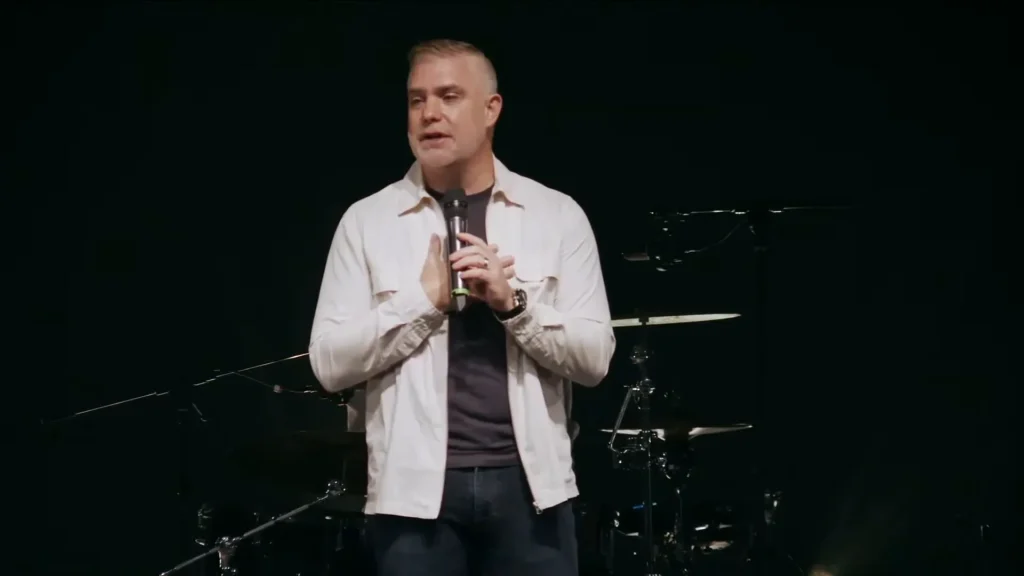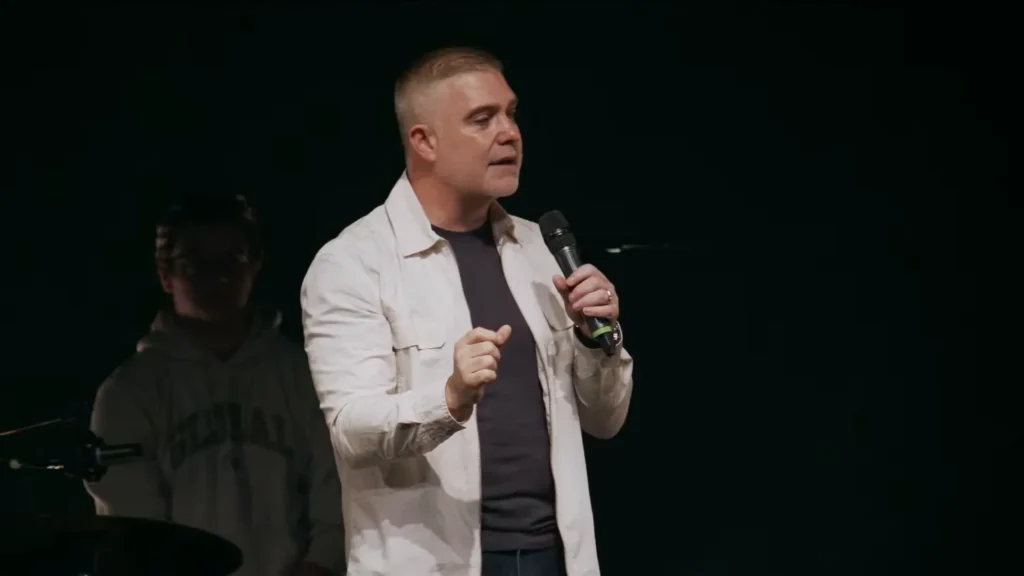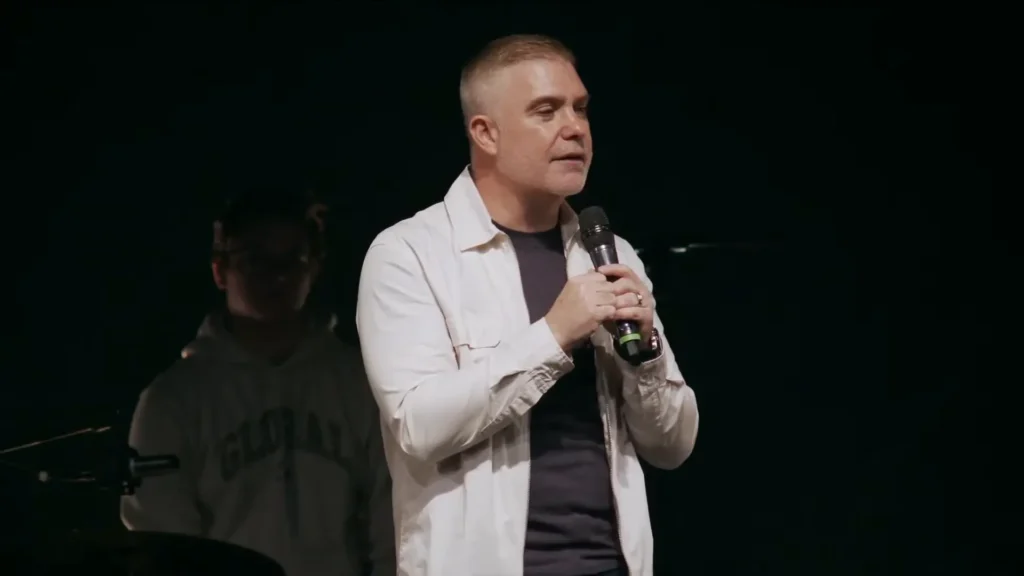To Him | Week 3 | Pastor Ben Pierce
Exploring the Spiritual Journey Through the Tabernacle
In this enlightening message from Generation Church, Pastor Ben takes us on a spiritual journey through the Tabernacle, revealing its significance as a roadmap for worship and connection with God. This blog will explore the symbolism and steps involved in approaching the divine presence, drawing parallels between the Old Testament practices and New Testament faith.
Welcome and Introduction
Welcome to a transformative experience at Generation Church! We are excited to take you on a spiritual journey that delves deep into the Tabernacle and its profound significance in worship. This service is designed to create space for you to truly lean into the presence of God. Whether you are new to our community or a long-standing member, we invite you to engage fully in this sacred time.

The Purpose of Today’s Service
Today’s service is an opportunity to explore the intricate layers of worship as illustrated by the Tabernacle. We aim to guide you through its symbolism, helping you to connect with God on a deeper level. We hope that you will leave this experience feeling enriched and renewed in your faith.
Understanding the Tabernacle
The Tabernacle, as described in the book of Exodus, serves as a divine blueprint for worship. It is not merely an ancient structure but a representation of how we can approach God. The design encompasses various elements, each with unique significance, leading us into a deeper encounter with the divine.

The Eastern Gate: Entering God’s Presence
As we begin our journey, we first approach the Eastern Gate, the sole entrance to the Tabernacle. This gate is significant because it symbolizes the beginning of our approach to God. The rising sun illuminates the path, representing hope and the light of Christ guiding us into His presence.
Upon entering through this gate, we are reminded of Psalm 104, which states, “Enter His gates with thanksgiving.” This sets the tone for our worship, as we transition from the wilderness of our lives into a place of divine connection and forgiveness.

The Altar of Sacrifice
Upon entering the courtyard, the first sight is the Altar of Sacrifice. This bronze altar is where animals were sacrificed, symbolizing atonement for sins. The bloodshed here is a foreshadowing of the ultimate sacrifice of Jesus Christ, whose blood cleanses us from all unrighteousness.
The significance of this altar cannot be overstated. It represents the cost of our salvation and the grace extended to us through Christ. Understanding this helps us appreciate the depth of God’s love and the lengths He went to restore our relationship with Him.

The Bronze Laver: Cleansing and Sanctification
Next, we encounter the Bronze Laver, a vessel filled with water for purification. After the sacrifices, both priests and worshippers would wash their hands and feet here, symbolizing the need for cleansing before approaching God further.
This act of washing signifies not just physical cleanliness but also spiritual sanctification. It reminds us that, while the blood of Christ has cleansed our sins, we are called to maintain purity in our daily lives. This ongoing process of sanctification allows us to grow in our relationship with God.

Entering the Holy Place
As we transition from the Bronze Laver, we enter the Holy Place, a sacred space within the Tabernacle. This area is pivotal in our journey of worship, marking a deeper interaction with God. Within this space, we encounter several significant elements that enhance our understanding of divine communion.

The Golden Lampstand and the Table of Showbread
To our left, we see the Golden Lampstand, often referred to as the Menorah. This seven-branched lampstand is a symbol of God’s eternal light. The central flame represents the divine, while the six outer flames signify humanity, illustrating our connection to the Creator.
The Lampstand was not merely decorative; it played a crucial role in the illumination of the Holy Place. It represents the Holy Spirit’s presence, guiding and empowering us as we navigate our spiritual journey. The priests were tasked with ensuring that the lamps burned continually, signifying that our light must never go out.

On the opposite side, we find the Table of Showbread, which holds twelve loaves of bread. These loaves are made of fine flour, symbolizing the refinement process the people of God underwent in the wilderness. Each loaf represents one of the twelve tribes, reminding us of God’s provision and sustenance for His people.
In addition to the bread, a pitcher of wine sits on the table, representing the blood of Christ. This symbolism connects us to the Last Supper and the communion we share in remembrance of His sacrifice. Just as the grapes must be crushed to produce wine, so too was Christ crushed for our healing and salvation.

The Altar of Incense: The Aroma of Prayer
As we move further into the Holy Place, we encounter the Altar of Incense. Constructed of acacia wood and overlaid with gold, this altar holds immense significance. It represents the prayers and petitions of the people rising to God as a sweet aroma. Twice daily, incense was burned, symbolizing the continual communication between God and His people.
The altar’s materials also hold meaning; the acacia wood signifies humanity, while the gold represents divinity. Our prayers, though born from imperfect lives, are made perfect through Christ. They ascend to God, who transforms them into a pleasing fragrance.

The Veil and Access to God
Behind the Altar of Incense lies the Veil, a significant barrier that once separated humanity from the Holy of Holies. This veil, thick and impenetrable, symbolized the divide caused by sin. Yet, through Christ’s sacrifice, this barrier was torn, granting us direct access to God. We can now approach Him with confidence, knowing that our sins have been atoned for.
The tearing of the veil signifies the end of separation. We are invited into the very presence of God, where we can experience His love and grace. This access is not just a privilege; it is a call to intimacy with our Creator.

The Importance of Worship and Sacrifice
As we reflect on the elements of the Holy Place, we see that worship and sacrifice are intertwined. Each component—the Lampstand, the Table of Showbread, and the Altar of Incense—demonstrates the need for a heart aligned with God.
Worship is not merely about songs or rituals; it is a lifestyle. Our sacrifices, whether of time, resources, or praise, reflect our commitment to God. He desires our worship to be fueled by a heart transformed by His grace, creating a sweet aroma that pleases Him.
As we engage in this sacred act, let us remember that we are part of a greater narrative—a story of redemption and grace. Our worship goes beyond the walls of the church; it permeates every aspect of our lives. In this way, we become living sacrifices, holy and pleasing to God.
